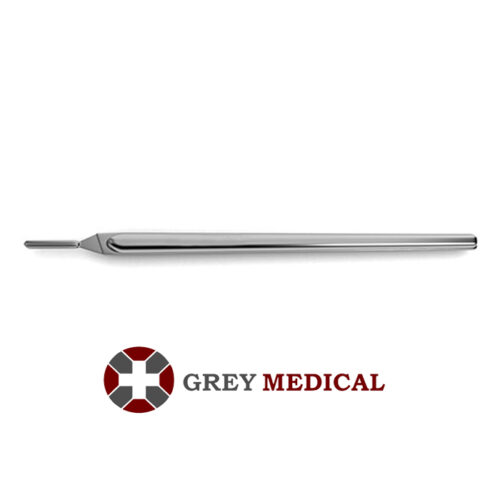Surgery is one of the oldest and most critical branches of medicine, and its success often depends on the precision of the tools used. Among these tools, medical knives stand out as essential surgical instruments. Designed with the utmost care and precision, medical knives enable surgeons to perform procedures with accuracy, reducing risks and promoting optimal outcomes for patients.

What Are Medical Knives?
Medical knives, often referred to as surgical knives or scalpels, are specially crafted instruments used during surgeries. They are designed to make precise incisions or dissections, ensuring minimal tissue damage. These knives are typically made from high-quality stainless steel or titanium to maintain sharpness, durability, and sterilisation standards.
From minor procedures like removing skin lesions to complex surgeries involving delicate organs, medical knives are indispensable. Their refined design allows surgeons to exert unparalleled control, which is key in delivering successful results.
The Evolution of Medical Knives
Surgical instruments, including medical knives, have evolved significantly over centuries. Historical accounts reveal the use of rudimentary blades made from bones, stones, or metals. With the advent of steel production in the modern era, these tools became more sophisticated. Recent advancements in technology have introduced innovations such as disposable blades, laser scalpels, and even robotic surgical tools equipped with cutting-edge medical blades.
These advancements have not only increased the precision of incisions but have also improved patient recovery times, reduced risks, and minimised scarring. The evolution of medical knives underscores the critical role they play in advancing surgical outcomes.
Types of Medical Knives
A variety of medical knives exist to cater to the diverse needs of surgical procedures. Each type is meticulously designed, bearing in mind its specific application and the tissues it will interact with.
The traditional scalpel remains one of the most commonly used medical knives. Featuring a long handle and a detachable blade, it offers surgeons flexibility and control. Disposable scalpels are designed for single use, significantly reducing the risk of cross-contamination during surgeries. Meanwhile, micro-surgical blades are engineered for intricate, specialised procedures such as eye surgery, where precision is paramount. These knives often have a smaller blade profile to allow surgeons to access delicate structures.
Additionally, advanced alternatives such as electric or laser scalpels are gaining popularity. Laser scalpels, for instance, use concentrated light energy to make incisions while simultaneously sealing blood vessels, reducing bleeding and enhancing the surgeon’s visibility during the procedure.
Applications of Medical Knives in Surgery
Medical knives find their applications across a broad spectrum of surgical disciplines. From general surgery to highly specialised fields such as neurosurgery or cardiovascular surgery, these instruments play a pivotal role in ensuring success.
For example, in cardiac procedures, precision knives are used to access the heart while safeguarding surrounding tissues. Similarly, in plastic and reconstructive surgery, surgeons rely on sharp and controlled blades to sculpt and repair tissues, achieving desired cosmetic results. Ophthalmologists employ minuscule surgical knives to perform delicate operations like cataract extractions, ensuring the patient’s vision is restored without complications.
The application of medical knives extends to non-invasive or minimally invasive techniques as well. Laparoscopic surgeries often require small-scaled blades designed for specific instruments that pass through tiny incisions. This approach limits patient discomfort and reduces recovery periods, making these surgeries increasingly preferred.
Importance of Precision and Hygiene
The effectiveness of a surgical procedure is heavily reliant on the precision and hygiene of the instruments used. A perfectly designed medical knife allows surgeons to execute flawless incisions, preserving healthy tissue and enhancing the accuracy of their work.
Equally significant is the sterilisation of medical knives. Surgical instruments must be cleaned and disinfected thoroughly to eliminate potential pathogens that could lead to infections. Many hospitals now rely on disposable surgical knives to entirely remove the risk of contamination, further ensuring patient safety during and post-surgery.
The Future of Medical Knives
The medical field continues to innovate, and the development of surgical instruments, including medical knives, shows no signs of slowing. The incorporation of robotics in surgical theatres is transforming how these tools are used. Robot-assisted surgeries often utilise highly advanced medical knives attached to robotic instruments, allowing unparalleled precision and reducing human error. Similarly, the integration of smart technologies into surgical tools, such as connected devices capable of providing real-time data during procedures, stands as a promising frontier for medical knives.
This push toward innovation ensures that medical knives will remain at the forefront of surgical techniques, advancing with the needs of patients and the capabilities of surgeons.
Final Thoughts
Medical knives are more than just surgical instruments—they are an extension of the surgeon’s skill. From simple procedures to life-saving surgeries, their importance cannot be overstated. The evolution of medical knives over millennia highlights their central role in advancing medicine and improving patient outcomes.
Whether through innovative materials, precision engineering, or the integration of cutting-edge technology, medical knives continue to shape the future of surgery. Their reliability, precision, and adaptability make them indispensable in healthcare, ensuring that patients receive the best care possible both now and in the years to come.







